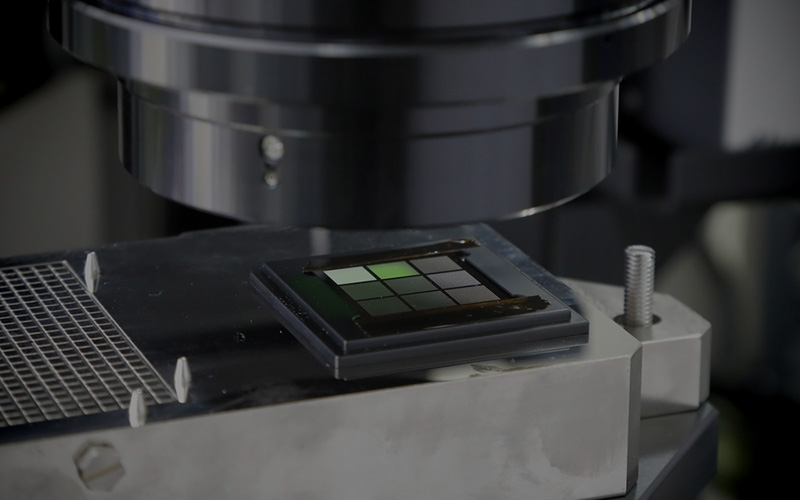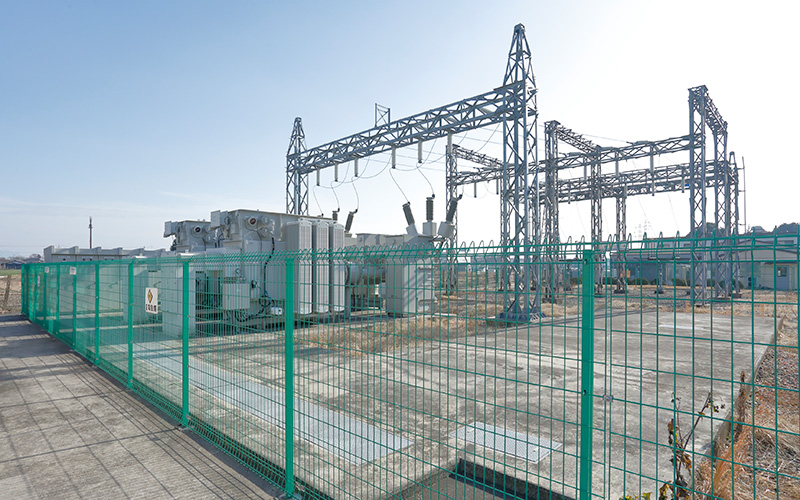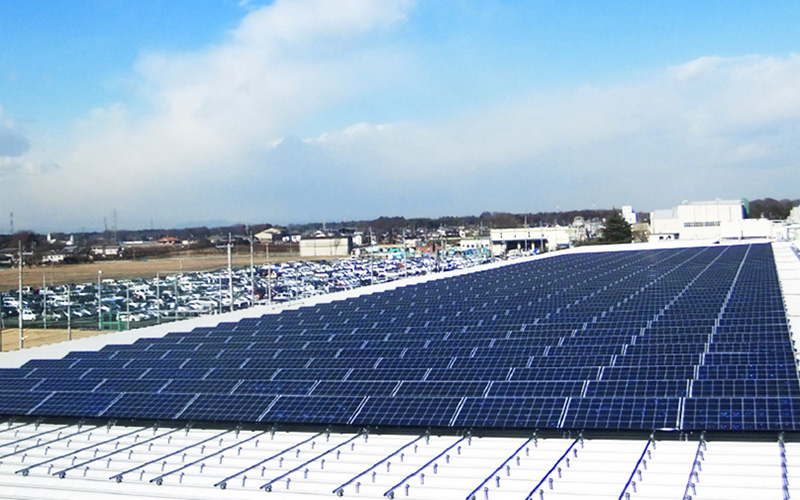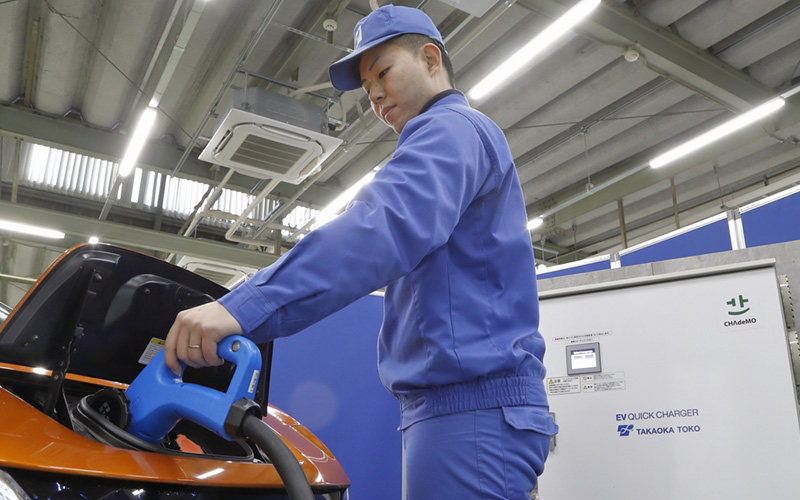Eco.Web5LiteG
- Naoaki Okuzono
- Takahiro Kato

With the Great East Japan Earthquake in 2011, there has been a growing trend around the world to curb power usage peaks. From the previous idea of "how much electricity can be used while the basic charge is kept as low as possible" to "how to operate the equipment efficiently while reducing the power consumption." As society's awareness of electricity has changed, it has become necessary to accurately grasp the state of electricity usage.
What was required was a technology of TAKAOKA TOKO, which visualizes the energy. The theme of this project is "Eco.Web5LiteG," a gateway device for high-voltage consumers that enables real-time confirmation of power usage from the cloud. We will introduce the development process and the future possibilities.
Technology
Development of an IoT gateway that makes it possible to grasp and manage power usage by utilizing cloud services.
Electric power companies are making progress in introducing smart meters, and each company has started a B-route service *1. To promote the visualization of power consumption, TAKAOKA TOKO has developed a gateway device "Eco.Web5LiteG" that can accurately acquire power information data of high-voltage consumers using the B route and view the data on the cloud.
By collaborating with the cloud, we can easily "visualize" the trends in energy consumption through PC and tablets. Furthermore, we believe that continuous collection, management and analysis of data through cloud functions can contribute to energy conservation and the leveling of power loads. The CPU board of "Eco.Web5LiteG" has become the standard platform of TAKAOKA TOKO and has been designed to meet various needs by adding an expansion board according to the application scene. We also plan to gradually adopt it for next-generation controllers with a view to demand response and VPP *2.
*1) A service that transmits data measured by smart meters to homes and buildings.
*2) Abbreviation for Virtual Power Plant. This is a virtual power plant that aims to increase the introduction of renewable energy, such as solar power generation and wind power generation, and to reduce system stabilization costs through standardization of energy conservation and power loads. In this virtual power plant, energy resources distributed in regions are converted into remote control (IoT) and a resource aggregator is integrated and controlled to function like a single power generation facility.

Profile
-
 Naoaki OkuzonoEEnergy Solution Business Division
Naoaki OkuzonoEEnergy Solution Business Division
Energy Solution Manufacturing Department
Development Group Manager -
 Takahiro KatoEnergy Solution Business Division
Takahiro KatoEnergy Solution Business Division
Energy Solution Manufacturing Department
Development Group
Realize "visualization" of power usage on the cloud.
Okuzono:This model is the 5th generation of the "Eco.web" series. Since around 2000, we have been dealing with building automation systems that automatically control building air-conditioning and lighting equipment. After that, in 2004, we commercialized the "First Eco.Web" as a tool for "Visualizing the power consumed by equipment" from the viewpoint of energy-management. "Eco.Web2", the second generation of the series, added a demand monitoring function to this.
Kato:From there, "Eco.Web3" made it possible to centrally monitor multiple bases via the intranet. "ECO.Web4" can be connected to the Internet by connecting a wireless router to it. In addition, the "Eco.Web5LiteG" that we are introducing this time is equipped with an LTE wireless module and has realized cloud support.
Okuzono:The name "Lite" comes from the fact that it has acquired ECHONET Lite*3 certification and support the high-voltage smart meter B route of all electric power companies. As a result, it is possible to acquire an accurate amount of power and store it in the cloud server.

Kato:The most difficult part of development was the implementation of the LTE communication module. "Eco.Web5LiteG" is designed to enable real-time power demand monitoring using the B-route service, but during the trial stage, this module could not successfully be connected to the data server on the cloud. Since this was our first attempt, we sought out the knowledge of experts to clarify the causes of the problem one by one.
Okuzono:Many of the electric power companies are to provide the high-voltage B route service for the first time, so we have carefully checked the connection with the high-voltage smart meters of each company. Also, there were times when LTE communication suddenly stopped after construction. When the cause cannot be figured out, we actually went to sites all over the country from Hokkaido in the north to Fukuoka in the south to investigate the situation.
Kato:Currently, the system is very stable, and if it is connected to our private Internet network, it is possible to easily maintain the "Eco.Web5LiteG" from the factory. In addition, the acquired data is exchanged in a highly secure environment, enabling easy and secure management on the cloud.
*3) A communication standard that specifies the control of devices, including household electrical appliances, high-voltage smart meters, and solar power generation systems. Registered trademark of ECHONET Consortium.

With the power of big data, be a company that makes the power supply and demand interchange system itself a business.
Okuzono:Currently, the changes in power consumption of many consumers have already been accumulated on the cloud data server that we manage. By analyzing this big data, we can expect to develop new services and new businesses in the future.
Kato:For example, by collecting statistics on the power consumption by each user's time zone, it is possible to grasp the power demand curve, e.g., "During a certain period of time, this office consumes a lot of electricity, but that one does not do so much." Recently, VPP has become more realistic, and it is considered that the need for a power interchange system will also become more active.
Okuzono:We are still collecting so-called big data on energy, but TAKAOKA TOKO's vision for the future is to analyze these data and provide systems and services for power interchange.
Kato:The essence of VPP is to consider "places with surplus electricity" in the world as a "virtual power plant." At the same time, the resource aggregator can also grasp the place where power is insufficient, creating a relationship of power interchange between the place where power is insufficient and the place where power is insufficient, thereby creating economic value for electric power companies and consumers.
Okuzono:If we can grasp the supply-demand balance of the whole community in the future energy environment where we must use power while valuing the limited resources, we can see how to use it optimally.. We are confident that the realization of our business will contribute to solving the energy problems facing the society in the future.

Latest articles
-
 interviewThe confocal surface shape measurement system for semiconductor reliabilityIt is no exaggeration to say that semiconductors are used in everything supporting our lives and industry in modern society. Examples include smartphones, home appliances, and industrial products in various fields.
interviewThe confocal surface shape measurement system for semiconductor reliabilityIt is no exaggeration to say that semiconductors are used in everything supporting our lives and industry in modern society. Examples include smartphones, home appliances, and industrial products in various fields. -
 interviewImplementation of a Sensor Solution for Substation DigitalizationGlobal energy prices remain at high levels. The presumed cause is the imbalance between energy supply and demand due to recovery in economic activity from the spread of COVID-19, unseasonable weather, disasters, Russia's invasion of Ukraine, and other factors. The soaring energy prices naturally have an impact on the electricity sector, putting not only ordinary households but also electricity suppliers, or electric power companies, in a difficult situation. Power companies are being forced to cut costs to keep power prices down.
interviewImplementation of a Sensor Solution for Substation DigitalizationGlobal energy prices remain at high levels. The presumed cause is the imbalance between energy supply and demand due to recovery in economic activity from the spread of COVID-19, unseasonable weather, disasters, Russia's invasion of Ukraine, and other factors. The soaring energy prices naturally have an impact on the electricity sector, putting not only ordinary households but also electricity suppliers, or electric power companies, in a difficult situation. Power companies are being forced to cut costs to keep power prices down. -
 interviewDevelopment of Techniques for Solar Power Generation Prediction Using AIIn order to promote carbon neutrality, the use of renewable energy that doesn't emit CO2 is expanding.Among renewable energy resources, solar power generation is an important one which will continue to grow in popularity.
interviewDevelopment of Techniques for Solar Power Generation Prediction Using AIIn order to promote carbon neutrality, the use of renewable energy that doesn't emit CO2 is expanding.Among renewable energy resources, solar power generation is an important one which will continue to grow in popularity. -
 interviewDevelopment of Medium-Capacity Quick Charger for Electric VehiclesIn anticipation of expansion of EV charging infrastructure in Japan, where the EV shift is accelerating, we worked on the development of the “medium-capacity quick charger (B11)” as a charger that meets the needs for intermediate chargers between normal chargers and quick chargers. This article introduces the features of the product, ingenuity in the development process, and our future vision.
interviewDevelopment of Medium-Capacity Quick Charger for Electric VehiclesIn anticipation of expansion of EV charging infrastructure in Japan, where the EV shift is accelerating, we worked on the development of the “medium-capacity quick charger (B11)” as a charger that meets the needs for intermediate chargers between normal chargers and quick chargers. This article introduces the features of the product, ingenuity in the development process, and our future vision.
